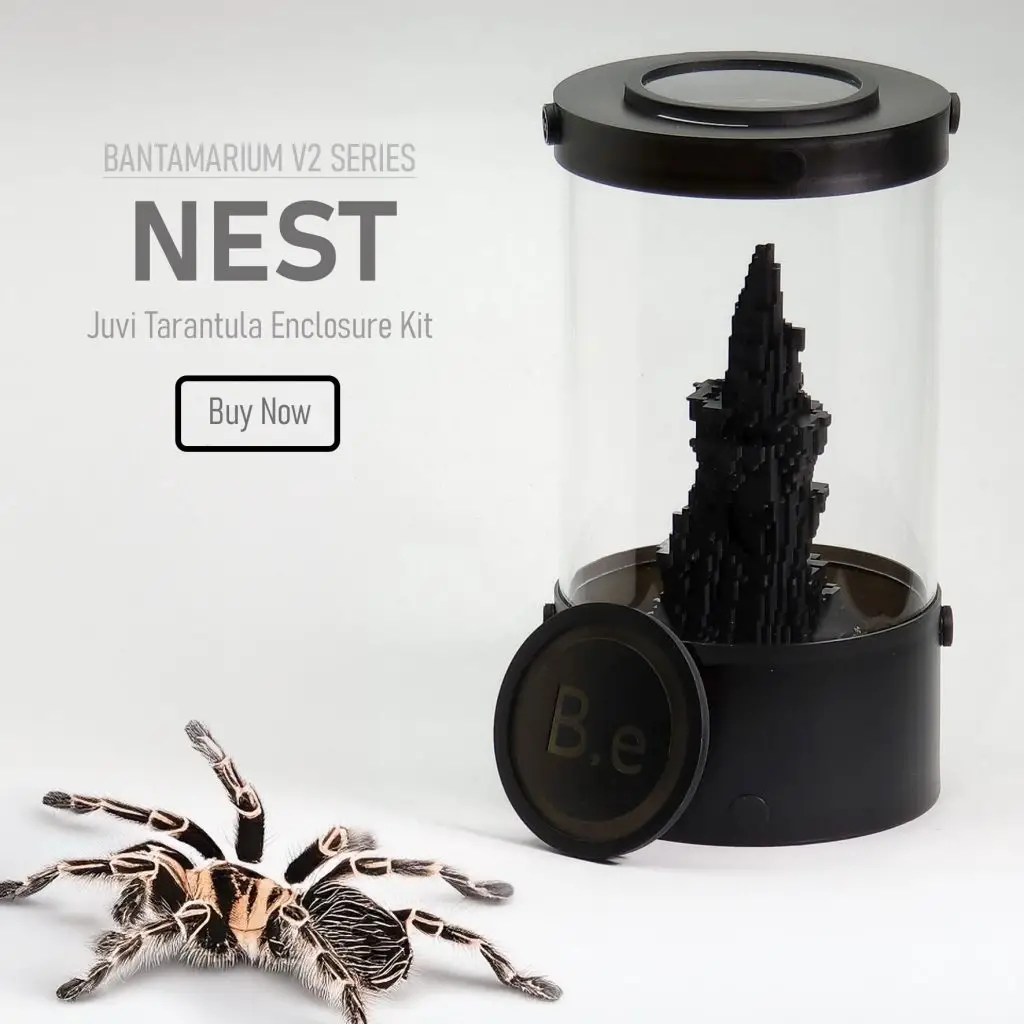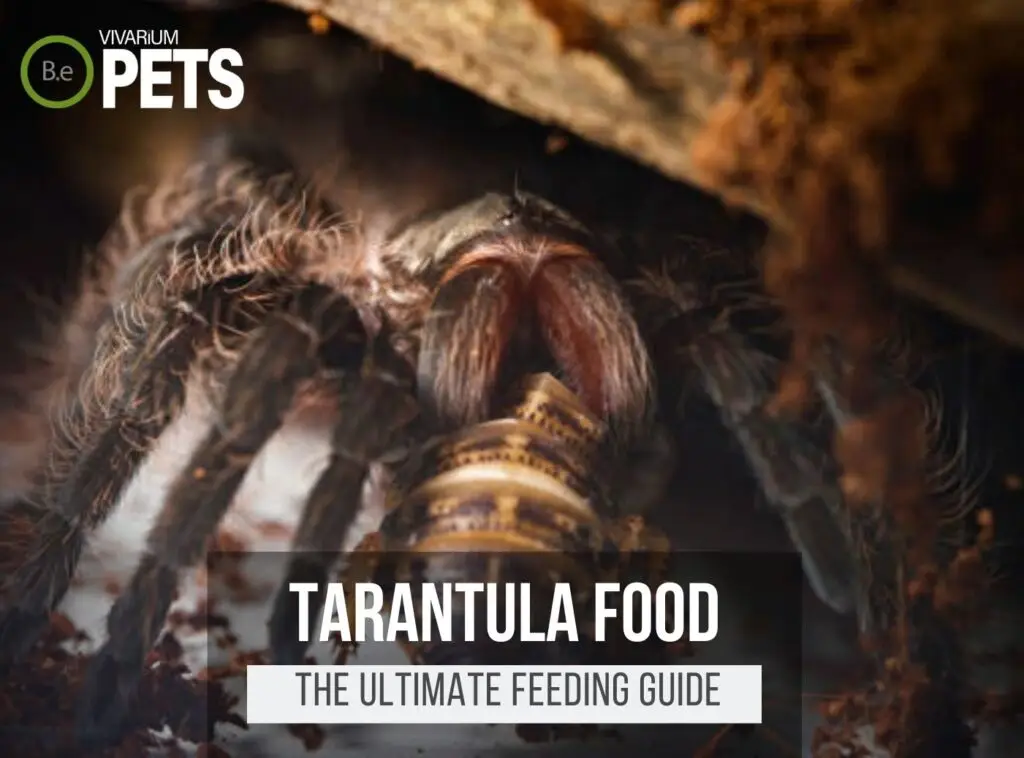Welcome to your comprehensive pumpkin patch tarantula care guide!
In this article, we’ll discuss everything you need to know to keep Hapalopus sp. Colombia healthy.
Habitual to southwestern Colombia, the pumpkin patch tarantula is an attractive solitary species that is easy to care for.
This makes it a popular choice for both beginner and experienced hobbyists.
Let’s dive in and learn all about this unique species so you can give your pet tarantula the best care possible.
Table Of Contents:
ToggleWhat Are Pumpkin Patch Tarantulas?
The Pumpkin Patch Tarantula is an arachnid species that is scientifically known as Hapalopus sp. Colombia.
They belong to the Theraphosidae family and are commonly referred to as small to medium-sized tarantulas.
The name pumpkin patch happens to be derived from the spider’s reddish-orange legs, which have been likened to pumpkins.
Living in the southwestern region of Colombia, this ground-dwelling species is largely solitary but does well in groups with proper setup and care.
Create the perfect home for your arachnid with our Customizable Spider Enclosure Kits, designed to meet all their habitat needs.
What Do Pumpkin Patch Tarantulas Look Like?
Pumpkin patch tarantulas are lovely spiders that get their name from their deep orange/brown coloration.
These tarantulas can have legs that stretch between 4-6 inches in length, and a dark brown carapace that measures somewhere around 2 inches.
Their exoskeletons are especially strong and are covered in small hairs, which are what give them their velvety appearance.
To complete the look, gorgeous brightly-hued tufts of hair adorn their legs.
Hapalopus sp. Colombia also stands out thanks to its eight eyes, arranged in two curved rows on its head.
Since tarantulas lack the sophisticated vision of most other animals, their many eyes allow them to sense movement and detect shadows.
Benefits Of Using Pumpkin Patch Tarantulas
Using Hapalopus sp. Colombia in your vivarium is a great way to add a touch of exotic beauty and interest.
This species is easily identified by its notable black and yellow stripes and vibrant orange abdomen.
These spiders are quite active and display interesting behaviors, such as web building and climbing.
Pumpkin Patch Tarantulas usually do not bite and are generally quite gentle, making them an excellent starting tarantula for both beginners and experienced hobbyists.
This species can live for many years with proper care, so you’ll be able to enjoy your pet for a long time.

Pumpkin Patch Tarantula Facts
The Pumpkin Patch Tarantula, scientifically known as Hapalopus sp. Colombia is a rare and stunning species native to a small part of South America.
They are a solitary species and have a relaxed temperament, making them excellent pets for both beginner and experienced hobbyists.
These spiders can live for several years on a diet of live insects, and breeding them in captivity is relatively straightforward.
Habitat
Hapalopus sp. Colombia is a species native to southwestern Colombia.
These spiders occupy a variety of different habitats, including the edges of humid forests and grassy plains.
They’re most commonly found living in leaf litter and low-lying vegetation, where their earthy coloring helps them blend in with their surroundings and avoid predators.
The pumpkin patch tarantula is a terrestrial burrowing spider, that creates burrows that extend up to nine inches beneath the surface.
The burrows are lined with silk to help retain moisture and keep the spider protected from predators.
In addition to their native Colombia, these tarantulas have been introduced to Mexico and parts of the United States.
Replicate their natural habitat perfectly with our bioactive species-specific soil mixes, designed to provide the ideal moisture and organic content for your spiders.
Diet
In the wild, Hapalopus sp. Colombia feeds mainly on insects, though they will occasionally take on small rodents, reptiles, amphibians, and other arthropods.
These tarantulas typically hunt from the ground. They will sit and wait until they detect movement from potential prey, then strike using their powerful venom.
Once captured, the prey is then wrapped in silk for consumption at a later date.
If left unfed, pumpkin patch tarantulas can survive for a fairly long time without food, although care should be taken to ensure appropriate prey is provided regularly.
Temperament
Hapalopus sp. Colombia is known to be quite docile and tolerant of humans.
They are not naturally aggressive and usually allow their handler to go about their business.
Because of this, they are the ideal tarantula for beginner hobbyists who want to observe their behavior without worrying about being bitten.
Although pumpkin patch tarantulas are tolerant, they will still exhibit defensive behavior when threatened.
Therefore, it is good practice to be cautious when you interact with your spiders and never attempt to handle them if they are agitated.
It is also recommended to wash your hands before and after handling your tarantula to avoid transferring potential bacteria.
In terms of other animals, the tarantulas may view them as potential prey rather than as companions.
Therefore, it’s best to keep them separated from other animals like cats, dogs, and other spiders to keep them safe.
Lifespan
Pumpkin Patch Tarantulas typically have a life span of around 3 to 4 years as males, while females have been known to live up to 8 to 10 years in captivity.
This species is a slow grower, and often won’t reach its adult size until it is at least one or two years old.
The life cycle of Hapalopus sp. Colombia consists of several stages – egg, spiderling, juvenile, and adult.
Females will lay a clutch of around 100-300 eggs in a sac, and guard that sac until the eggs hatch.
Once hatched, the larvae will then molt multiple times over several weeks until they reach an immature adult stage.
At this point, the tarantulas will then molt one final time to reach their adult stage and size.
Breeding
Pumpkin patch tarantulas are solitary species of spider, so they do not actively search for mates in the wild.
Instead, the male will wander around in search of a female to mate with, and if a female is feeling receptive, she will signal it by raising her abdomen and waving her front legs.
After the mating is completed, the female will lay hundreds of eggs in a silken egg sac, which she will guard fiercely until the eggs hatch.
The eggs typically take about two months to hatch, and the resultant spiderlings will stay with the mother until they are ready to disperse and search for their territories.
Where To Find Pumpkin Patch Tarantulas
If you are planning to source a pumpkin patch tarantula for yourself, there are two main options.
Firstly, you can purchase one from a reputable breeder or dealer.
Buying from a reputed source will ensure the health of the spider before it is delivered to you and will also ensure that you know the history of the specimen.
Secondly, if you are brave enough, you can find them in the wild.
Hapalopus sp. Colombia is endemic to open grasslands and scrubland areas of southwestern Colombia so if you’re up for a challenge, be sure to check these areas for specimens.
It is good to keep in mind that specimens collected in the wild will need to be given additional time and attention to ensure their health and well-being.
No matter which source you choose, it is vital to do your research beforehand.
Make sure you understand the size and temperament of the species as well as the basic requirements for their care.
Finally, if you opt for the wild-caught option, make sure you are well-equipped with the right tools and supplies before you undertake this daunting task.
Pumpkin Patch Tarantula Care
Taking care of a Pumpkin Patch Tarantula requires providing a suitable habitat with proper terrarium substrate, decor, lighting, and temperature.
You will need to feed them the correct type and frequency of insects, cleaning and handling guidelines, and monitoring and maintenance tips.
Experienced hobbyists can also follow advanced care tips to make sure their pets remain happy.
Tank Requirements
The ideal tank for Hapalopus sp. Colombia should be a tall and spacious glass terrarium that allows for plenty of ventilation.
The enclosure should be established with a substrate of moist organic coco fiber and peat moss soil mix that can hold humidity.
You can add pieces of wood or bark to provide a natural-looking habitat.
The ideal temperature range for the vivarium is between 69-78 degrees Fahrenheit.
The humidity should be kept at 60-80%, while the pH level of the soil and substrate should be kept between 6.5-7.5.
Lastly, full-spectrum terrarium light should be used to mimic their natural environment, although it is not necessary if the main source of light in the tank is natural sunlight.
What Do Pumpkin Patch Tarantulas Eat?
Feeding your pumpkin patch tarantula is key to giving it a long and healthy life.
It is best to feed your pet in individual prey to reduce the risk of aggression. Offer one-to-two-week-old crickets, mealworms, and roaches twice a week as their main diet.
You can also feed them waxworms, silkworms, and superworms biweekly.
Live food should be dusted with vitamin and calcium powder every week to ensure they are getting all the nutrients they need.
In addition, provide occasional treats such as moths and grasshoppers for enrichment.
Make sure all food items are gut-loaded to provide the essential vitamins and minerals your pet needs.
If you’re looking for a more detailed approach to feeding these arachnids, be sure to check out my ultimate DIY tarantula food guide. I give a more in-depth explanation of the best foods and my favorite recipe.
Best Tankmates For Pumpkin Patch Tarantulas
Hapalopus sp. Colombia is a solitary animal, which means it should not be kept with other spiders of the same species.
However, there are a few small docile creatures that can safely live alongside pumpkin patch tarantulas.
These tankmates include:
- Springtails (Collembola): These small nocturnal insects play a major role in breaking down organic matter in the enclosure and removing excess humidity.
- Isopods: While these beetle cousins may look unassuming, isopods provide numerous benefits to your tarantula, including aerating the soil, eating decaying matter, and supplying a source of enrichment as your tarantula will hunt them.
- Dubia Roaches: A favorite among tarantula owners, Dubia roaches provide live prey that is packed with nutrients. Not only do they make great feeders, but they can also help keep the enclosure clean.
Unlike some of the more aggressive tarantulas, H. Colombia prefers to avoid confrontation.
This makes them an ideal choice for the beginner keeper, and their chill demeanor makes them relatively safe in the presence of others.
When introducing tankmates, keep an eye on your tarantula’s behavior and discontinue adding animals if you notice excessive aggression or stress.
Conclusion
Congratulations on wrapping up your comprehensive Hapalopus sp. Colombia care guide!
We’ve covered everything from setup, maintenance, and troubleshooting to advanced care tips for the experienced hobbyist.
With the essential information you have just learned, your pumpkin patch tarantula will enjoy a safe and comfortable home.
There’s no doubt that this species is an ideal pet. Their adorable pumpkin-like appearance, docile nature, and ease of care make them a perfect companion.
Create the ideal habitat for your arachnids with our species-specific soil mixes and Spider Enclosure Kits. These products provide everything you need for a thriving spider habitat.
Frequently Asked Questions
Pumpkin patch tarantulas are generally considered suitable for beginner tarantula keepers due to their small size, relatively docile nature, and ease of care.
Pumpkin patch tarantulas typically reach a size of up to 4 inches.
Yes, pumpkin patch tarantulas possess venom, as do all tarantulas, but their venom is considered mild and their bites are generally not medically significant to humans.
While some tarantulas can tolerate gentle handling, it is generally not recommended to handle pumpkin patch tarantulas or any tarantulas, as they are delicate creatures and can become stressed or injured easily.







